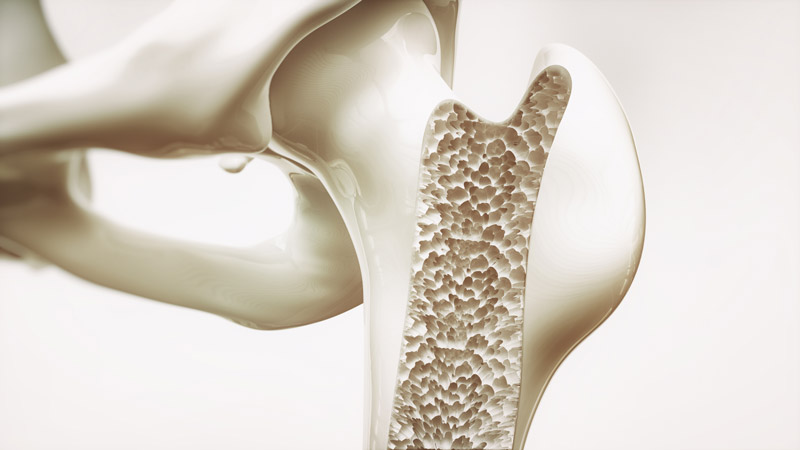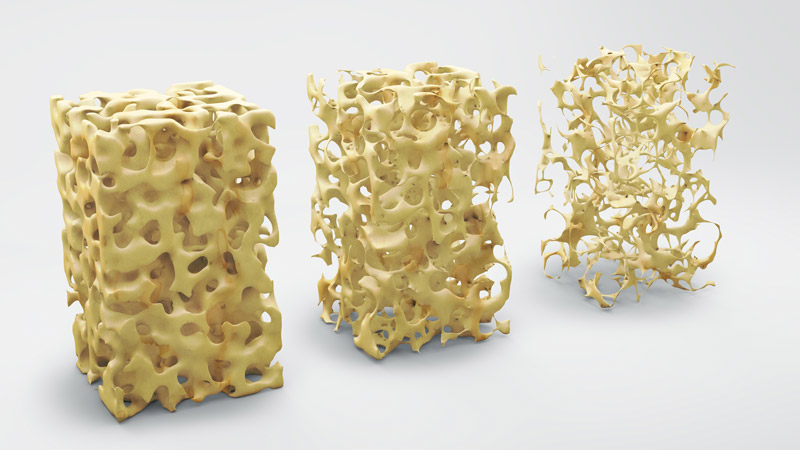
Clinical studies and interviews with women undergoing menopause have identified more than 34 different symptoms that result from this hormonal transition. Perhaps the most prominent among these are hot flashes and night sweats, impacting nearly 80% of menopausal women, followed by weight gain, mood changes, and decreased libido. But while these symptoms can be easily noticed, menopause may be causing more damage to your body than you realize inside your bones.
Osteoporosis is a condition in which the internal structure of your bones slowly weakens over time, becoming porous, brittle, and fragile. While it typically does not manifest with any physical symptoms, aside from slight height loss or rounding of the spine, osteoporosis is a dangerous disease that makes your bones exceptionally vulnerable to fracture. Accidental bumps or falls can lead to debilitating breaks which take considerable time to heal due to the sponge-like nature of the bone structure.

While men can be susceptible to osteoporosis in old age, women over the age of 50 are 4 times more likely to develop the condition. Why is this the case? First, women typically are smaller than men and have lighter, thinner bones that are typically less dense. Second, pregnancy and breast feeding can reduce calcium levels, which is drawn directly from its storage location inside a mother's bones. Most importantly, estrogen and progesterone deficiency during and after menopause impairs the natural bone renewal cycle. Due to hormonal changes during this transition, old bone cells are not replaced quickly enough with new ones to maintain a healthy bone structure, ultimately leading to osteoporosis.
For this reason, doctors typically recommend that post-menopausal women take action to fortify their bone density through a combination of weight-bearing exercise and calcium supplementation. Unfortunately, many run-of-the-mill calcium supplements are often insufficient, as they do not provide the body with all the ingredients required to accelerate the process of rebuilding bones. It is important to seek a combination of vitamins and minerals, especially magnesium and Vitamin D, to support the optimal absorption of calcium for stronger bones.
